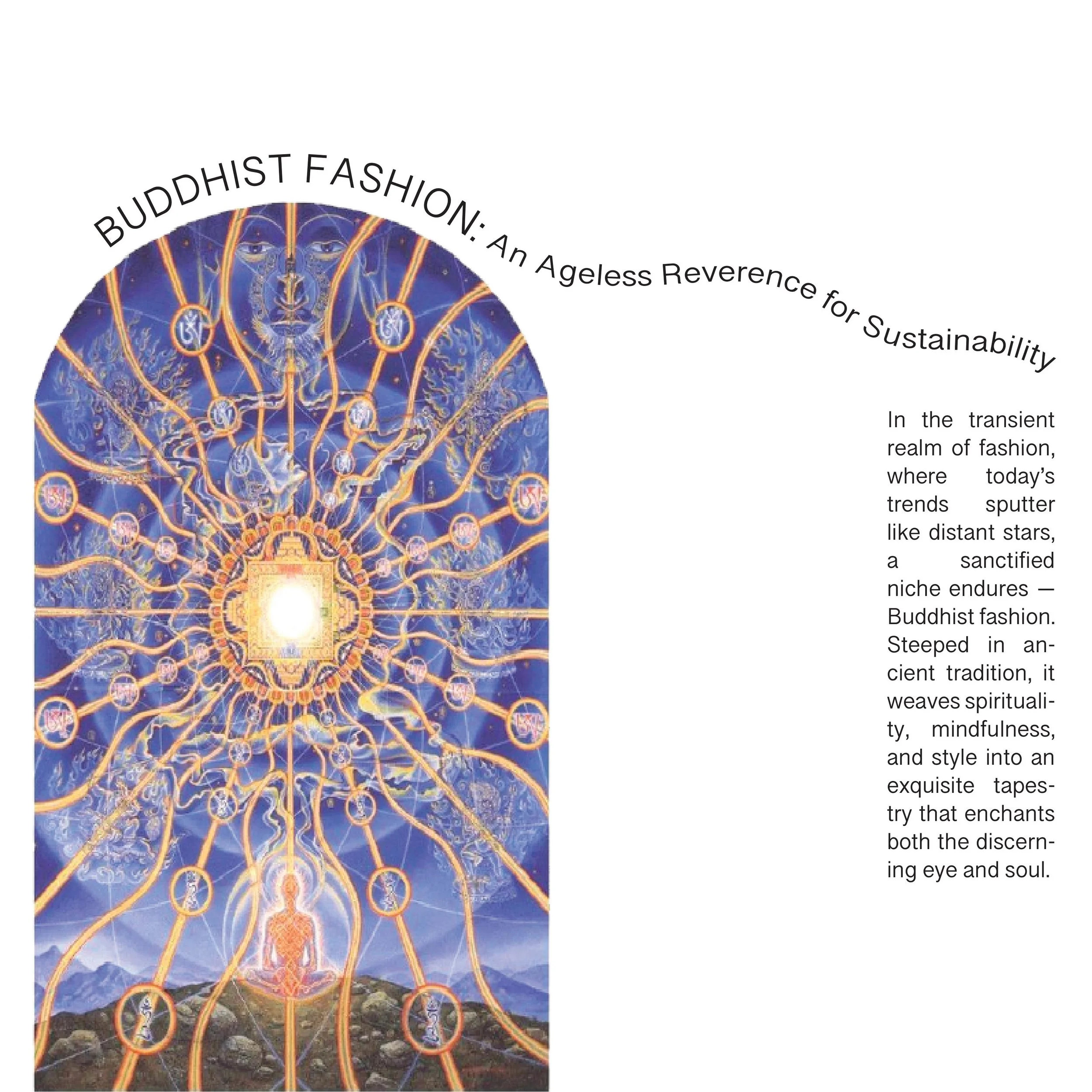Buddhist Fashion: An Ageless Reverence for Sustainability
Graphic Designer: Margo Ogrosky
The Basics of Buddhist Fashion
Buddhist fashion draws inspiration from the profound teachings of Buddhism, embracing minimalism, earth tones, and high-quality textiles. These sacred principles – goodwill toward others, patience, mindfulness, and, by extension, sustainability – shape the design, production, and embodiment of clothing. Importantly, sustainability, an echo of Buddhism's respect for all living beings, finds its sanctuary in this sacred realm. From Buddhist fashion brands such as PrAna, Heaven Gaia, and Evisu, to up-and-coming designers such as Mara Hoffman, Shaina Mote, and Ryan Roche, many have embraced minimalist, eco-friendly practices, utilizing organic materials to weave threads of compassion and harmony into their creations.
Sustainable Clothing Production
Buddhist fashion, like couture, is focused on both the construction of clothing and its aesthetic pull on viewers.
Ethical Sourcing: In alignment with the Buddhist principles of ahimsa (non-violence) and karuṇā (compassion), many brands prioritize ethical material sourcing, ensuring that no harm to animals or labor exploitation transpires in supply chains.
Local Artisans: Embracing tradition and community support, these brands marry economic prosperity and cultural preservation, nurturing a profound legacy. Local artists not only profit off the sale of clothing - money that flows back into their communities - but also reduce their carbon footprint and elevate traditional farming techniques over often dominant, industrial farming practices in the process.
Handcrafted Pieces: Handmade garments emanate a unique aura cultivated with the love and devotion of skilled artisans, that which is distinct from garments created by the machine-made disposable world of fast fashion.
The Intersection of Style and Spirituality
Buddhist fashion masterfully entwines spirituality and style into a harmonious tapestry, captivating the attention of Buddhists and non-Buddhists alike. Its essence reverberates in mainstream fashion, inspiring designers to infuse mindfulness and sustainability into their creations. Mindfulness can take many shapes. For example, mandalas translating to circles, are geometric patterns that grow from a center point. They are used as tools of meditation, forcing one to live in the moment one line at a time. In the context of fashion, mindfulness pervades each fiber that creates the textile, manifesting in simple patterns that have a meditative effect on viewers.
In a world gripped by consumerism, Buddhist fashion offers a tranquil alternative, encouraging introspection into the profound purpose of clothing – not just to cloak the body but to nurture the soul. It emphasizes that fashion can be a transcendent instrument for self-expression and spiritual growth, a luminous beacon in a world dimmed by material excess.
Urging us to be mindful of our sartorial choices by promoting simplicity and sustainability, Buddhist fashion embodies Buddhist teachings, serving as a symbol of an ageless reverence for sustainability: the belief that fashion can be a transcendent instrument for self-expression and spiritual growth.
Strike Out,
St. Louis
Writer: David Win
Editor: Hannah Hummel
Graphic Designer: Margo Ogrosky

